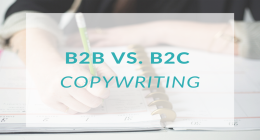Cash flow provides insight about the financial health of an organization. A business’s cash flow can be assessed using different methods, depending on the type of cash flow activity and other factors.
Operating cash flow, represented on the cash flow statement, refers to the income that flows in and out of a business due to its operational income and expenses.
Learn how operating cash flow works, how it is used, and how you can calculate taxes from it.


Key Takeaways
Cash flow refers to the way money flows in and out of a business during a specific time.
A company’s cash flow can indicate whether it is likely to meet its financial obligations.
Cash flow can be categorized into three different types: operating cash flow, investing cash flow, and financing cash flow.
The amount of taxes owed by a business can be determined by subtracting EBIT and depreciation from the operating cash flow.


How Do You Use Cash Flow Information?
Cash flow refers to the way in which money flows into and out of a business, and operating cash flow is cash flow that is connected with operating activities.
Operating cash flow is useful for helping executives track their business’s financial health so they can make decisions on how it will operate. Management can determine whether the business can afford its expenses, and whether they need to make changes. Cash flow is also used to prove a business’s creditworthiness to lenders and investors.
Note
Unlike an income statement that shows a company’s profits, a cash flow statement shows a beginning cash balance, ending cash balance, and the difference between the two.
Operating Cash Flow Formula
The operating cash flow of a business can be calculated using the following formula:
Operating Cash Flow = EBIT + Depreciation – Taxes
EBIT refers to the earnings before interest and taxes. This is the amount the business made from its revenue minus the operating expenses. To determine the operating cash flow, the business must track its depreciation of assets used for operations and add this amount to its EBIT. After this has been calculated, it must deduct the amount of taxes owed to reach the operating cash flow.
For example, if a business earned $500,000 in revenue and incurred operating expenses consisting of salaries, materials, and equipment of $400,000, then the $400,000 is deducted from the $500,000 to find the EBIT, which is $100,000.
If depreciation was $60,000, but taxes owed were $75,000, the operating cash flow calculation would be:
Operating Cash Flow = $100,000 + $60,000 – $75,000
So, the company would have $85,000 of operating cash flow.
Typically, a business calculates its taxes due by multiplying the tax rate by the amount of taxable income made by the business. By analyzing the operating cash flow equation, a business can determine how tax is impacting the amount of cash flowing into the business.




